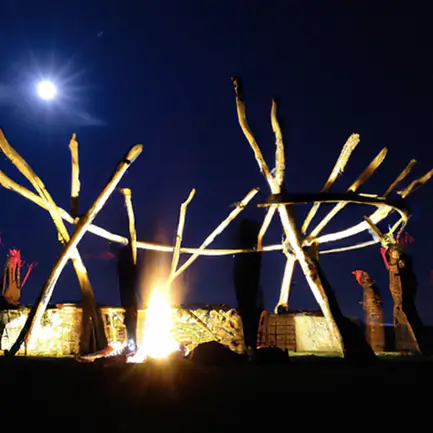Our species devotes a singular amount of time to an utterly unserious aspect of life: play. This begs the question: what is the adaptive value of horsing around? What possible evolutionary benefit could an activity that sees no specific return possibly have that we devote so much time to it?
Play holds a particularly special position in the study of both human and non-human behavior; it is accepted as a near-universal part of many animals’ lives, but a definition for ‘play’ that covers species from birds to bats is elusive. What holds together the mock-fighting of puppies and the rhyming chants of our own children, however, is a definition of play that says it is not for any specific purpose; it’s a set of actions that don’t quite achieve anything that an animal repeats during certain phases of their life when they are relaxed and not under threat. Three separate types of play are usually distinguished: play with objects, with locomotor skills, and with friends. The critical thing that separates these types of activities from others, whether undertaken by a cow or a crow, is that they are fun.
It does not, in a strictly Darwinian sense, make any sense for animals to play unless play itself has some adaptive value. Time spent in play is not spent acquiring food or sleeping, for instance, and bouncing around unnecessarily in play burns calories that could be used for growth or survival. And yet, a huge number of animal species have been observed ‘playing’: monitor lizards like the giant Komodo dragon will chew and fetch objects like a dog, fish will chase balls, and octopuses will explore Lego. Play is most at home, however, in mammals, and nowhere is it more obvious than in our own species.
There has been a great deal of argument in evolutionary biology and evolutionary psychology about what that adaptive value might be. Hypotheses include play in animals as physical training, allowing immature individuals to ‘practice’ pounces or perches that they will need as adults. The theory dating back to Victorian times that play is in fact a serious business that serves to train adult minds is still quite prominent, as can be seen by the vast array of ‘educational’ toys available. What these approaches have in common is that they see play as purposeful, as a kind of training mechanism. In this framing, juvenile play serves to make a fully competent adult, of whatever species.
It is clear that play does help train some animals to survive and thrive. A study of bear cubs found the cubs that played more had better survival rates; cheetah cubs that spent more time pretending to stalk their family also did more stalking of prey. There is a vast body of research on the way that play prepares human children for their lives as adults, and in fact our species spends a proportionately longer amount of time on the most playful period of our lives, childhood, than any other. So, while we know that humans engage in locomotor, object, and social play, what we need to understand is why it is adaptive for our species to spend so much time doing it.
One of the ways to do this is to look at how play works in closely related animals. Play does not behave like some sort of directly inherited Mendelian trait; play is deployed very differently even among relatively closely related species. Compare two of the great apes that, to the untrained eye, seem very similar: bonobos and chimpanzees. Both are great ape species of similar size and morphology, but they last shared an ancestor 1 to 2 million years ago and today are separated by the Congo River. Their social systems are very different, with male-dominated hierarchies in the chimpanzees and more fluid and female-led social groups in bonobos. They also occupy different environmental niches, with more reliance on seasonal fruit by bonobos and more access to year-round foods, including plants and insects, by chimpanzees. These may relate to differences in the skills they need to eat: chimpanzees make and use tools such as termite ‘fishing rods’ while bonobos have never been seen to do so.
One difference is in the amount and time the species spend in play. Bonobos are inveterate players throughout their lifetimes, whereas chimpanzees tend to limit play to infancy and childhood. The type of play chimpanzees and bonobos enjoy is also different. Young chimpanzees, who will grow up to become tool users, do more ‘object’ based play than young bonobos. Young bonobos however, who rely more on cooperation to organize their adult societies, will spend more time in ‘social’ play. Play also results in different outcomes for the two species: juvenile chimp play fights often escalate into real fights, while this almost never happens in bonobos.
Perhaps one of the most critical differences in the way these two species play is that in bonobos, play carries on throughout the animals’ lives. Chimpanzees, as they get older, have less and less tolerance for these kinds of interactions, while bonobos retain a kind of childlike tolerance for some kinds of play throughout their lives. That not all species give up on play as adults suggests that there is more to play than just training—adults, after all, are supposed to be fully trained. This is something that we can recognize in our own species: human adults are also champions at playing; whether it is sports, video games, dramas, or any other sort of activity that meets the not-quite-functional-but-fun definition of play.
Adult play tends to be social and to happen in species where social relationships are complicated and require a lot of finesse to manage. Playful interactions, particularly play fighting, help less-dominant adults test the boundaries of their relationships with more dominant ones, reinforce social bonds, and generally maintain the social organization of the group. This kind of adult play encourages cooperation and tolerance, and may even support collective decision-making.
We can look at the evolutionary commitment to play that our species has made in two parts, then. Our long childhoods give us a great deal of opportunity to ‘train’ through play—to gain competence in locomotor, object manipulation, and social skills. We are certainly not the only species to do this, nor are we very unique among our closest relatives: we like to play with tools, just like chimpanzees, because we are also a tool-using species, and we engage in all sorts of social play like bonobos. For us humans, our long childhoods give us a chance to play longer—but perhaps what most stands out is our ability to carry on this childlike willingness to take things a bit less seriously into adulthood. Our dedication to play throughout our lives, then, may be precisely the mechanism that allowed us to evolve to survive with less rigid social hierarchies and more cooperative social groups.


